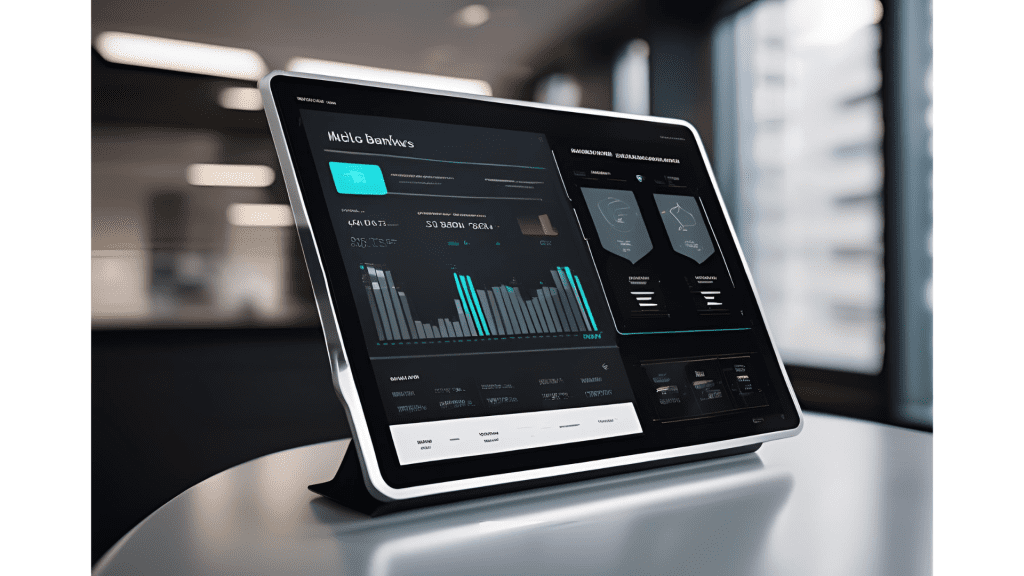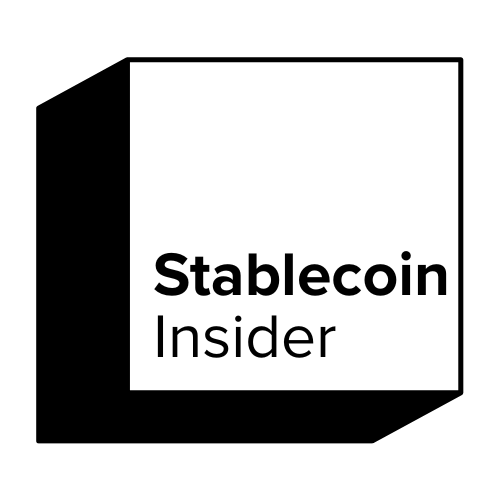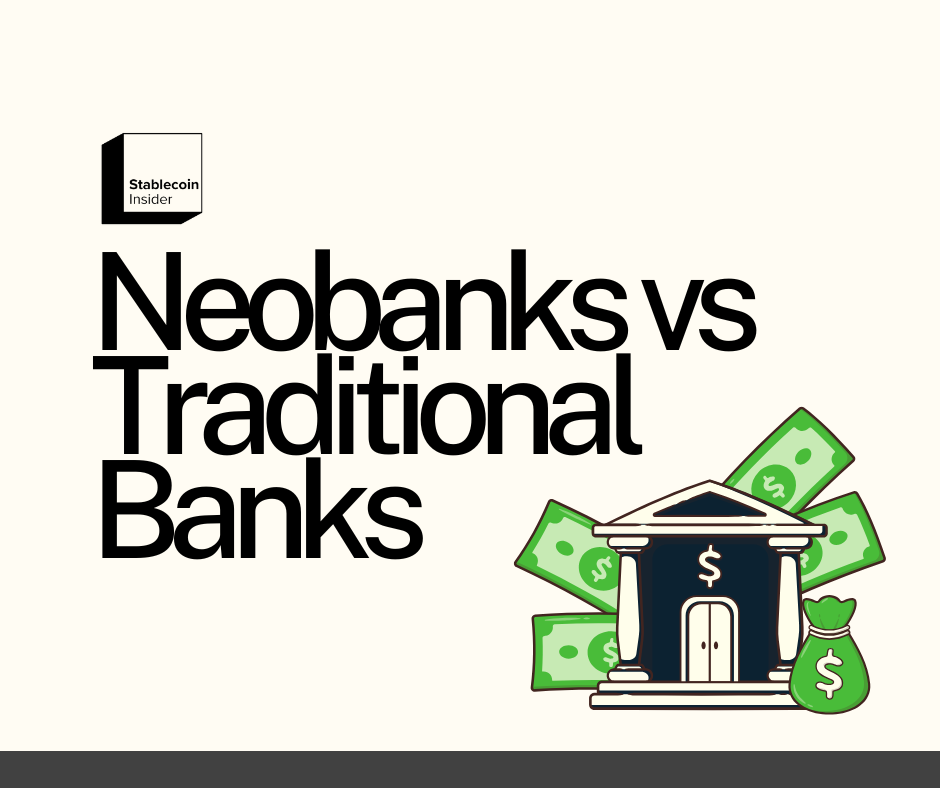Neobanking is dominating the FinTech landscape, with projected revenues soaring from $96 billion in 2023 to an astounding $2 trillion by 2030.
While nearly 400 neobanks operate worldwide, only 5% have achieved profitability, highlighting both the potential and challenges of this emerging banking model.
The generational divide in adoption is striking – 55% of Millennials and 45% of Gen Z show strong interest in digital banks, compared to just 13% of Baby Boomers.
This stark contrast raises an important question: should you choose a neobank or stick with a traditional bank?
We’ll examine the key differences between these banking models, helping you understand their unique advantages and limitations.
From lower fees and higher interest rates to face-to-face service availability, we’ll break down everything you need to know to make an informed decision about your banking future.
What is Neobanking?

The digital revolution has fundamentally altered how we interact with financial services.
At the forefront of this transformation are neobanks – FinTech companies that deliver online banking services exclusively through digital channels, without physical branches.
Definition and core features of neobanks
Neobanks are tech companies that provide banking services through online platforms or mobile applications in partnership with a partner bank, which is often an established financial institution.
The term “neobank” derives from the Greek word “neos,” meaning “new,” aptly describing their role in challenging traditional banking systems.
Despite being called banks, most neobanks don’t hold banking licenses themselves. Instead, they partner with chartered financial institutions to offer core banking services. This relationship allows them to provide FDIC-insured accounts while focusing on creating streamlined digital experiences.
The core features that define neobanking platforms include:
- Digital-first infrastructure – Services accessible 24/7 via mobile apps and websites
- User-friendly interfaces – Intuitive design focused on seamless customer experience
- Lower fees and better rates – Reduced overhead costs passed on as savings
- Real-time notifications – Instant updates on transactions and account status
- Advanced security measures – Multi-factor authentication and encryption protocols
Additionally, many neobanks integrate AI-powered tools for personalized financial insights, budgeting assistance, and automated savings features.
What Makes a Neobanking Platform Different from Traditional Banking

The fundamental difference between neobanks and traditional banks lies in their business models and service delivery.
Traditional banks maintain physical branches alongside digital offerings, while neobanks operate exclusively online.
Traditional banks are fully licensed and chartered, offering comprehensive services including loans, mortgages, investments, and in-person financial advice. In contrast, neobanks typically focus on a narrower range of services, predominantly checking and savings accounts, payment processing, and basic financial tools.
Furthermore, neobanks utilize cloud computing for scalability, enabling them to manage large transaction volumes seamlessly. Their technological advantage allows for faster innovation cycles, what traditionally took years can now be accomplished in weeks.
Cost structure represents another significant difference. Without expenses for maintaining physical locations, neobanks can offer accounts with minimal or no fees, no minimum balance requirements, and more competitive interest rates on deposits.
The Rise of Neobanking Services
The neobanking sector has experienced remarkable growth. In 2015, only 12 neobanks existed worldwide; by 2024, that number surged to 303.
User adoption has followed a similar trajectory, with projections reaching 850 million users by 2030.
This expansion stems from shifting consumer preferences, particularly among younger generations who prefer managing finances digitally.
Millennials and Generation Z find neobanks appealing because the integrated financial management tools and real-time updates complement their digital-first lifestyles.
The market impact has been substantial.
The global neobank market is expected to grow at an impressive 47% CAGR through 2030, potentially exceeding $1 trillion in valuation.
In fact, collectively, Europe’s neobanks alone attracted $495.5 million in funding across just the first five months of 2018.
However, profitability remains a challenge for many neobanks as they prioritize customer acquisition over immediate returns. To address this, some are expanding their service offerings beyond basic banking to include cryptocurrency services and more comprehensive financial planning tools.
As digital banking becomes increasingly ubiquitous, online banks continue to reshape the financial landscape by improving accessibility, reducing costs, and driving innovation throughout the industry.
Traditional Banks: Strengths and Weaknesses in 2025

As digital challengers emerge across the financial landscape, traditional banks maintain significant strengths rooted in their established presence and comprehensive service models.
These institutions, with their physical locations and extensive history, offer unique advantages alongside growing challenges in an increasingly digital world.
PRO: The Established Infrastructure Advantage
Traditional banks benefit from well-developed networks of branches and ATMs nationwide. Larger institutions may have tens of thousands of ATM machines available to customers without transaction fees.
This physical presence creates opportunities for face-to-face “relationship banking,” allowing customers to develop personal connections with staff that can prove valuable when additional assistance is needed.
Moreover, traditional banks often enjoy higher levels of consumer trust, especially for handling major financial transactions.
Nearly three-quarters of consumers in the Asia-Pacific region express trust in established financial institutions.
This perception of security and reliability remains a significant competitive advantage, particularly for critical financial products like mortgages and loans.
PRO: Full-Service Banking Capabilities
Traditional banks typically function as one-stop financial shops, offering a wide range of services under a single roof.
These comprehensive offerings include savings accounts, checking accounts, mortgages, investment products, and retirement planning. The convenience of addressing multiple financial needs through one institution remains appealing to many customers.
Besides standard banking services, traditional branches provide access to:
- Safe deposit boxes for valuable storage
- Notary services for legal documents
- Immediate cashier’s checks and money orders
- Face-to-face financial consultations
This breadth of services creates opportunities for cross-selling products across an established customer base. Additionally, in-person bankers can help explain complex financial terms and provide guidance that digital-only banks may struggle to match.
Cons:
Despite these advantages, traditional banks face significant hurdles in the digital age.
Many operate on legacy infrastructure that is often decades old, limiting their ability to communicate with other systems or quickly develop new services. Some banks still rely on outdated technologies like COBOL, creating obstacles to digital transformation.
Furthermore, maintaining physical branch networks generates substantial overhead costs. Without the expense of physical locations, neobanks can offer accounts with minimal or no fees and more competitive interest rates.
The average traditional savings account pays only 0.59 percent interest, with some major banks offering as little as 0.01 percent.
Related: High Yield Stablecoins
Traditional banks also struggle with limited hours of operation, compared to the 24/7 accessibility of digital platforms. To remain competitive, many are adopting hybrid models that combine physical locations with enhanced digital capabilities.
JPMorgan’s plan to build 500 new Chase branches demonstrates a continued belief in the value of physical touchpoints, even as traditional banks invest heavily in digital transformation.
Key Advantages of Neobanking Apps Over Traditional Banks

The financial sector is witnessing a significant shift as neobanks offer distinct advantages over their traditional counterparts.
These digital-first platforms are gaining popularity not just for their convenience but for tangible benefits that directly impact consumers’ financial lives.
Lower fees and better interest rates
Without the burden of maintaining physical branches, neobanks pass on significant savings to customers.
Neobanking platforms typically reduce costs by 60-70% compared to traditional banks, resulting in customers paying approximately 27% less in annual fees.
Many neobanks offer:
- Zero-fee accounts and free domestic transfers
- Minimal foreign exchange markups
- Higher interest rates on savings accounts, often 2-4% compared to traditional banks’ average of 0.59%
This cost reduction is quantifiable and meaningful, McKinsey research confirms that neobanks operate with a fraction of traditional banks’ costs, enabling them to serve customers profitably at much lower income thresholds.
Enhanced Digital Experience and User Interface
Neobanks have reimagined banking around customer needs rather than institutional convenience. They prioritize user experience through intuitive interfaces that make banking straightforward and accessible.
Consequently, many offer:
Real-time notifications for deposits, withdrawals, and payments that create transparency and help users avoid overdrafts. Their engagement tools provide customers with a more interactive banking experience, including personalized financial insights and budgeting tools.
Essentially, neobanks are shifting toward n = 1 level personalization, where each customer receives unique propositions generated by multiple machine-learning models.
Faster Innovation and Feature Deployment
The pace of innovation at neobanks significantly outstrips traditional institutions.
The average time between major banking innovations has decreased from 26 months to just 9 months, allowing neobanks to rapidly respond to changing customer needs.
Built on modern digital platforms, neobanks can swiftly deploy new technologies. Their agile technological infrastructure enables creating highly tailored financial products for specific population segments with unique needs.
Accessibility for Underserved Populations
Perhaps most notably, neobanks are democratizing financial services for populations historically excluded from traditional banking.
From 2011 to 2021, global account ownership rose by 50%, increasing from 51% of adults to 76%.
For those in remote areas, neobanks eliminate the need for physical visits to city-based branches, and most don’t even issue physical debit cards.
In markets where mobile financial services are widely available, financial inclusion has grown by an average of 12.6% in just five years.
Primarily, neobanks bridge gaps by introducing digitized, locally relevant services that cater directly to underserved communities’ needs, including immigrant groups and those struggling with the expensive fees of traditional banks.
Where Traditional Banks Still Outperform Neobanks

Despite the rapid growth of neobanking platforms, traditional banks maintain significant advantages in several key areas. Research consistently shows that established financial institutions excel in aspects that many customers still value highly.
Face-to-face customer service
Bank customers overwhelmingly prefer direct human interaction for major financial decisions.
According to research, 53.5% of people reported purchasing financial products through physical branches in the past year.
This preference becomes particularly pronounced for complex applications like mortgages, where face-to-face guidance proves invaluable.
Physical branches serve as community hubs where customers can develop relationships with bank representatives who understand their specific financial situations.
As one customer noted, “The tellers know us by name and are able to handle our business efficiently”. This personal touch creates a level of service that purely digital platforms struggle to replicate.
Comprehensive Product Offerings
Traditional banks typically function as one-stop financial centers, offering a diverse array of services beyond basic checking accounts:
- Mortgages, personal loans, and vehicle financing
- Safe deposit boxes and notary services
- Commercial loans and business banking solutions
- Wealth management and retirement planning
While neobanking services excel at basic spending accounts, they generally provide limited options for comprehensive financial planning. Traditional institutions, meanwhile, provide solutions that accommodate various life scenarios.
Established Trust and Security Perception
Trust remains a critical factor in banking relationships, especially with customers considering the role of FDIC insurance in securing their deposits.
Research reveals that nearly three-quarters (73%) of consumers in the Asia-Pacific region trust traditional banks, compared to just 44% for digital-only banks.
This trust gap persists across all age demographics, with Baby Boomers showing the largest discrepancy—81% trust traditional banks versus only 33% for neobanks.
Complex Financial Services and Advice
Traditional banks shine when customers need specialized guidance. Their established infrastructure supports large-scale operations and enables personalized financial consultation unavailable through digital-only platforms.
Many traditional institutions have maintained long-standing customer relationships through personal bankers who provide advisory services and financial planning assistance.
This proves particularly valuable for wealth management, investment products, and business banking needs that require nuanced understanding of individual circumstances.
Nevertheless, traditional banks increasingly integrate fintech innovations into their own systems, creating a hybrid approach that combines established banking frameworks with technological enhancements.
This evolution allows them to maintain their core strengths while addressing the convenience demands of modern banking customers.
Choosing Between Neobanks and Traditional Banks: Decision Factors
Selecting the right banking solution depends fundamentally on your unique circumstances and what you value most in financial services. As banks continue to evolve, the choice becomes increasingly personalized.
Your financial habits and preferences
First and foremost, consider your daily banking routines. For those who prioritize convenience and manage most transactions digitally, neobanking platforms offer significant advantages.
Personalization has become crucial—61% of banking customers expect institutions to understand their unique needs and expectations.
In fact, more than half of customers would switch providers if services weren’t personalized.
Fee sensitivity is another critical factor. If you’re concerned about costs, neobanking services typically offer lower fee structures due to reduced overhead expenses.
Banking needs based on life stage
Throughout life, your banking requirements evolve significantly:
In your 20s and early 30s, the focus is typically on basic services like checking accounts and saving for short-term goals—neobanks often excel here with higher interest rates and budgeting tools.
Mid-career (40s-50s), your needs grow more complex with mortgage refinancing, education funding, and retirement planning—areas where traditional banks’ comprehensive services may prove valuable.
Pre-retirement and retirement phases usually demand more sophisticated wealth management and fixed-income solutions that established institutions typically handle better.
Comfort with technology
Your technological aptitude plays a decisive role in banking choice. Undoubtedly, the pandemic accelerated digital adoption, yet many remain “digital newbies” regarding financial services.
Research indicates 38% of new banking customers abandon onboarding if it seems too lengthy, while 26% cite easy enrollment as their primary consideration when choosing a financial institution.
The hybrid approach: Using both banking models
In reality, the banking decision isn’t always binary. Many consumers find value in utilizing both systems simultaneously.
A growing trend shows customers maintaining neobank accounts for daily transactions while relying on traditional institutions for complex services like mortgages and financial advice.
This hybrid approach—using neobanking efficiency for routine matters while accessing traditional banks’ expertise for major financial decisions—offers a pragmatic solution for many consumers.
List of Neobanks
The neobanking landscape continues to expand worldwide, with diverse players catering to various financial needs and market segments.
Let’s explore some of the most influential neobanking institutions across different categories and regions.
Biggest Neobanks
Globally, several neobanks stand out for their massive user bases and market valuations.
Nubank from Brazil leads with over 70 million customers, making it the largest neobank worldwide.
Following closely, Revolut serves approximately 25 million users across multiple countries, while Chime has captured roughly 14.5 million accounts in the United States.
Other notable giants include N26 from Germany with 8 million users and Monzo from the UK with 7 million customers.
Crypto Neobanks
As cryptocurrency adoption grows, specialized neobanking platforms have emerged.
Wirex combines traditional and crypto banking, supporting over 150 currencies. Juno offers checking accounts with crypto rewards and yield-generating capabilities.
Unifimoney stands out by integrating traditional banking with crypto investing and passive income options.
Forthwith, we’re seeing increased integration between conventional banking services and cryptocurrency functionalities.
Neobanks in the United States
The American neobanking market features several prominent players.
SoFi initially began as a student loan platform before expanding into comprehensive banking services.
Varo became the first consumer neobank to receive a national bank charter in 2020.
Current focuses primarily on serving teenagers and their parents with specialized accounts.
Dave differentiates itself by offering cash advances without interest, specifically targeting overdraft fees.
Neobanks in Europe
Europe represents the most mature neobanking environment globally.
Monzo pioneered social banking features in the UK market.
Starling Bank offers both personal and business accounts with robust functionality.
Bunq from the Netherlands emphasizes sustainability in banking, currently planting trees based on user spending.
In Germany, N26 has expanded across 24 European markets, while France’s Qonto exclusively serves business customers with specialized tools for entrepreneurs and SMEs.
Conclusion
Banking choices have evolved beyond the simple traditional versus digital divide. While neobanks excel at providing streamlined, cost-effective services for daily transactions, traditional banks maintain their edge through comprehensive financial solutions and personalized guidance.
The best banking choice ultimately depends on your specific needs. Young professionals might benefit from neobanks’ higher interest rates and innovative budgeting tools. Alternatively, customers seeking complex financial products or face-to-face consultation may find traditional banks more suitable.
Many customers now choose a hybrid approach, combining the strengths of both banking models. This practical strategy allows them to enjoy neobanks’ competitive rates and digital convenience while maintaining access to traditional banks’ extensive services and expertise.
As digital banking continues its rapid growth, both neobanks and traditional institutions will likely adapt and improve their offerings. Understanding your financial priorities, comfort with technology, and life stage requirements will help you make the most informed decision about your banking future.
Read Next:
- Fintech Lending – The Hidden Truth
- Embedded Finance – How it Works
FAQs
Q1. How do neobanks differ from traditional banks in terms of fees and services? Neobanks typically offer lower fees and better interest rates due to reduced overhead costs. However, traditional banks provide a wider range of services, including complex financial products and face-to-face consultations.
Q2. Are neobanks as secure and trustworthy as traditional banks? While neobanks employ advanced security measures, traditional banks often enjoy higher levels of consumer trust, especially for major financial transactions. However, both types of banks can offer FDIC insurance on accounts through partnerships with chartered institutions.
Q3. Can I access in-person services with a neobank? Neobanks operate exclusively online and don’t have physical branches. For those who value face-to-face interactions, especially for complex financial matters, traditional banks may be more suitable.
Q4. Which type of bank is better for managing daily transactions? Neobanks excel in providing user-friendly digital interfaces, real-time notifications, and innovative features for everyday banking needs. They often offer more convenient and cost-effective solutions for routine transactions.
Q5. Is it possible to use both neobanks and traditional banks? Yes, many consumers adopt a hybrid approach, using neobanks for daily transactions and digital banking needs while relying on traditional banks for complex services like mortgages and financial advice. This strategy allows you to benefit from the strengths of both banking models.

